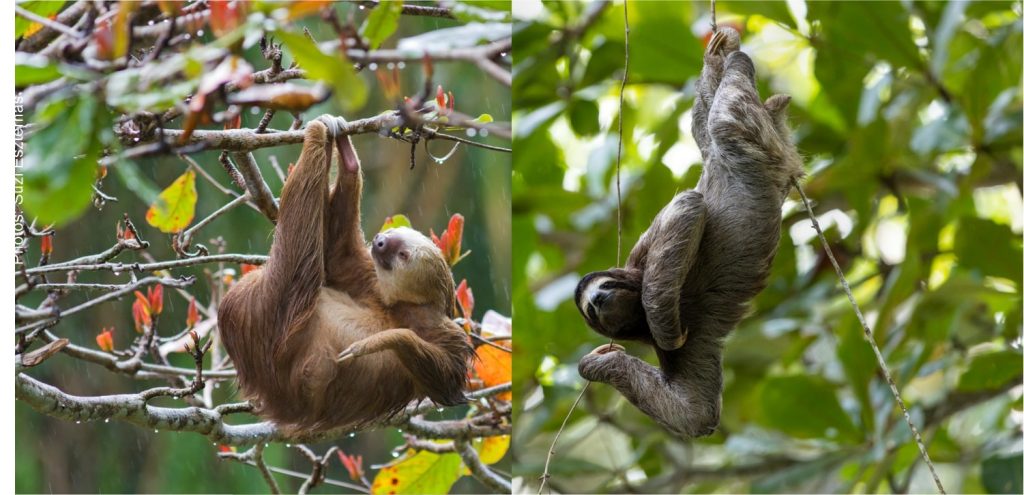How Sloths' Slow Movement Enables Efficient Food Acquisition and Survival

Introduction: The Connection Between Slowness and Survival
Sloths are renowned for their unhurried movements, a trait that has long puzzled observers and researchers alike. Far from being a sign of laziness, this deliberate pace is a remarkable adaptation directly linked to how sloths acquire food and sustain themselves in the challenging rainforests of Central and South America. Understanding this connection requires an exploration of sloths’ physiology, dietary habits, and ecological strategies. This article provides a comprehensive guide to how slow movement aids sloths in food acquisition, offering actionable insights for enthusiasts, researchers, and those interested in evolutionary biology.
Sloths’ Unique Diet: Low-Calorie Challenges
Sloths are primarily folivores , meaning their diet consists mainly of leaves, which are notoriously low in calories and difficult to digest. Some species, such as the two-toed sloth, may supplement their diet with fruit, flowers, and occasionally insects, but leaves remain the core dietary staple for most sloths [1] . This dietary specialization presents two major challenges:
- Low energy intake : Leaves provide limited calories, requiring efficient strategies to maximize nutritional yield.
- Slow digestion : Leaves contain cellulose, a complex carbohydrate that is hard for mammals to break down without specialized gut bacteria [4] .
To overcome these challenges, sloths have evolved a massive, multi-chambered stomach that houses symbiotic bacteria crucial for extracting nutrients from their fibrous meals. Yet, digestion remains a slow process-food can take up to ten times longer to pass through a sloth than through a cow [4] . Retention times may range from 157 hours to over 1,200 hours in extreme cases [5] .
Why Slow Movement Is Essential for Food Acquisition
The sloth’s slow movement is not a flaw; it is a strategic adaptation to its low-energy lifestyle:
- Minimized energy expenditure : By moving slowly, sloths dramatically reduce the number of calories they burn while searching for and consuming food. This is critical, given the low caloric value of their diet [1] .
- Continuous digestion : Sloths’ slow metabolism means their stomachs remain full for long periods. They do not need to eat constantly and can extract maximum nutrition from each meal before moving to the next [4] .
- Reduced risk and increased safety : Slow, deliberate movement makes sloths less noticeable to predators. Their cryptic behavior, combined with their camouflage, allows them to feed without drawing attention [5] .
Compared to other folivores like howler monkeys, sloths consume far less leaf matter per kilogram of body weight, relying on their metabolic efficiency and slow digestion to survive [5] .
Biological Mechanisms: Digestion and Thermoregulation
Sloths have one of the lowest mass-specific metabolic rates of any mammal. Their digestion is closely tied to ambient temperature; higher temperatures increase fermentation rates in the gut, allowing for slightly faster digestion and higher food intake [2] , [3] . This unique relationship between metabolism, digestion, and temperature means that sloths’ food acquisition strategy is finely tuned to environmental conditions.
Practical guidance for observing sloths in the wild or captivity includes monitoring ambient temperature and dietary patterns. Researchers and caretakers should note that sloths may eat more when temperatures rise, reflecting a natural adaptation to maximize energy intake when digestion is most efficient.
Step-by-Step Guide: How Slow Movement Supports Sloth Feeding
- Selection of food source: Sloths move slowly through the canopy, carefully choosing leaves that are tender and easier to digest. Their slow pace allows them to be selective, maximizing nutritional gain from each bite.
- Chewing and swallowing: While feeding, sloths chew slowly and use their large tongues to move food backward for swallowing. This steady process aids in breaking down plant material before digestion [4] .
- Extended digestion: Once food is ingested, it remains in the stomach for days or even weeks. The slow movement ensures that energy is conserved for this lengthy digestive process.
- Energy conservation: By burning minimal calories through slow movement, sloths ensure that the small amount of energy derived from their food is sufficient for survival.
For wildlife caretakers, replicating these conditions-offering a steady supply of leaves, maintaining warm ambient temperatures, and ensuring minimal stress-can help sloths thrive in captivity.
Potential Challenges and Solutions
Sloths face several challenges due to their slow movement and dietary specialization:
- Limited food intake: Since sloths depend on slow digestion, their ability to increase food intake is constrained by how quickly their stomach empties. Solutions include providing a variety of leaves and monitoring health for signs of digestive issues.
- Vulnerability to environmental change: Changes in temperature, habitat loss, or food scarcity can disrupt their delicate balance. Conservation efforts should focus on protecting sloth habitats and maintaining stable environmental conditions.
- Health monitoring in captivity: Captive sloths may require specialized diets and temperature control to mimic natural conditions. Caretakers should consult with zoological nutritionists and veterinarians familiar with sloth biology.
For detailed care recommendations, animal facilities should contact established zoological organizations or research groups specializing in sloth husbandry.

Source: pinterest.com
Alternative Approaches: Comparative Folivores
Other folivores, such as cows and howler monkeys, compensate for low-calorie diets by eating much larger quantities and moving more quickly. Sloths, however, have evolved to do the opposite, highlighting the diversity of solutions to the challenges of leaf-based diets. Researchers interested in comparative digestive strategies can search for peer-reviewed articles on folivory, digestive physiology, and energy expenditure in mammals for further reading.

Source: confusedwords.org
To access current information, consider searching for terms such as “sloth digestion research,” “folivorous mammals comparative studies,” and “sloth energy conservation strategies” on academic databases like PubMed or Google Scholar.
Conclusion: Key Takeaways and Practical Insights
Sloths’ slow movement is a sophisticated evolutionary adaptation that enables them to survive on a low-calorie, hard-to-digest diet. By minimizing energy expenditure, maintaining a constantly full stomach, and reducing predation risk, sloths have mastered the art of food acquisition in a challenging environment. For those interested in sloth biology, conservation, or animal care, understanding these mechanisms provides crucial guidance for supporting sloth populations and advancing research.
References
- [1] A-Z Animals (2023). Discover the Reasons Why Sloths Move So Slow.
- [2] PeerJ (2015). Sloths like it hot: ambient temperature modulates food intake in the brown-throated sloth.
- [3] PubMed (2015). Sloths like it hot: ambient temperature modulates food intake in the brown-throated sloth.
- [4] The Nature Institute (2020). What does it mean to be a sloth?
- [5] Green Institute (2016). Sloths aren’t lazy – their slowness is a survival skill.






